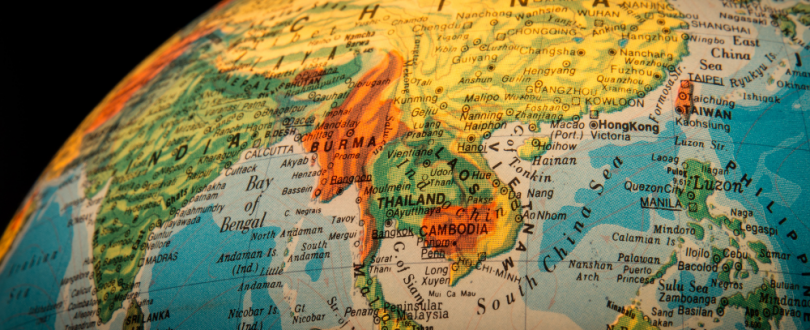
Visa Requirements for Exploring Asia: Your Complete Guide to Popular Destinations.
Asia, a continent bursting with an array of cultures, landscapes, and historical wonders, is a top destination for travelers seeking adventure and new experiences. However, navigating the visa requirements for different Asian countries can often seem like a maze. This guide aims to provide you with a clear understanding of the visa processes for some of Asia’s most popular destinations, ensuring your travel plans unfold seamlessly.
Traveling to Asia requires a clear understanding of visa requirements, which vary significantly from country to country. Generally, visas can be categorized into several types: tourist, business, work, student, and transit visas. The type of visa needed depends on the purpose of your visit – whether it’s for leisure, business, study, or work.
Additionally, some countries offer options like e-Visas or Visas on Arrival (VoA), which can simplify the application process. Always check the specific visa requirements for each country you plan to visit, as regulations can frequently change. It’s also important to consider the duration of stay allowed, visa validity, and any special conditions or restrictions that might apply.
Tourist Visas in Asia
Tourist visas are essential for those traveling for leisure. In Asia, the requirements for tourist visas vary:
Thailand: Offers a straightforward tourist visa application process, which can also be done online for certain nationalities.
Japan: U.S. citizens and several other nationalities can enjoy short-term visa exemptions for tourism.
Indonesia: Provides Visa on Arrival for tourists at major entry points, suitable for short stays.
Tourist visas typically have limitations on the duration of stay and generally do not permit the holder to engage in any form of employment.
E-Visas and Their Advantages
E-Visas are a convenient option for travelers, allowing you to complete the entire application process online:
– Convenience: Apply from anywhere with internet access, avoiding the need to visit an embassy or consulate.
– Speed: E-visa applications are often processed quickly, with the visa delivered electronically.
– Countries Offering E-Visas: India and Vietnam are examples of Asian countries that offer e-Visas for tourists and, in some cases, for business travel as well.
E-Visas are ideal for short-term visits and are often single-entry, although some countries may offer multiple-entry options.
Visa on Arrival: What You Need to Know
Visa on Arrival is available in several Asian countries and can be a convenient option:
Application Process: Upon arrival at the airport or border, you’ll need to fill out a visa application and pay the required fee.
Required Documents: Typically, you’ll need a valid passport, sometimes proof of onward travel, and occasionally passport photos.
Countries Offering VoA: Thailand, Cambodia, and Laos, among others, offer this option for tourists.
While convenient, it’s always wise to check the current regulations and prepare the necessary documents in advance.
Business and Work Visas for Professional Travelers
For business trips or employment opportunities in Asia, the correct visa is essential:
Business Visas: Generally for short-term visits to attend meetings, conferences, or training sessions. Countries like China and South Korea require an invitation from a host company.
Work Visas: These are more complex and typically require proof of employment or sponsorship from a company in the destination country. They often come with stricter requirements and longer processing times.
Whether traveling for business or relocating for work, ensure you apply for the appropriate visa to comply with local immigration laws.
Studying in Asia: Student Visa Requirements
For students looking to pursue their education in Asia, obtaining a student visa is a key step. Each country has specific requirements, but generally, you’ll need:
Proof of Enrollment: A letter of acceptance from an educational institution in an Asian country.
Financial Stability: Evidence that you can support yourself financially during your studies, which could include bank statements or a sponsor letter.
Health Insurance: Some countries may require international students to have valid health insurance.
Japan and China: These countries are popular for international students and have specific visa processes. For example, Japan’s student visa requires a Certificate of Eligibility before application.
Visa Exemption and ASEAN Agreements
Several Asian countries have agreements that allow for visa-free travel between them, especially within the ASEAN region. For example:
Short Visits: Countries like Thailand, Malaysia, and Singapore allow short visa-free visits for citizens of other ASEAN countries.
Duration: The duration of visa-free stays typically ranges from 14 to 90 days, depending on the agreement between the countries.

Multi-Entry vs. Single-Entry Visas
Understanding the difference between multi-entry and single-entry visas is crucial for planning your travel itinerary in Asia:
Single-Entry Visas: These allow you to enter the country once. Once you exit, even if the visa hasn’t expired, you cannot re-enter on the same visa.
Multi-Entry Visas: Ideal for travelers who plan to visit several countries and then return. They allow multiple entries into the country over a specified period.
Applying for Visa Extensions
If you wish to extend your stay in an Asian country beyond the duration granted by your initial visa, you’ll need to apply for a visa extension. The process typically involves:
1. Visiting Local Immigration Office: Usually, you must apply in person at the immigration office in the country.
2. Documentation: Submit the required documents, which may include an application form, your current visa, passport, and reason for extension.
3. Fee: There’s often a fee associated with visa extensions.
Health and Vaccination Requirements
Some Asian countries have specific health and vaccination requirements. For instance, a Yellow Fever vaccination certificate may be required if you’re traveling from or have transited through a country with a risk of Yellow Fever transmission.
Cultural Considerations in Visa Applications
When applying for a visa, being mindful of cultural norms can be crucial, especially during the interview process:
Respect and Etiquette: Demonstrating respect and understanding of the country’s culture can positively influence your application.
Dress Code: Dressing appropriately for your visa interview can also be an important factor.
Understanding visa requirements is a vital part of planning your journey to Asia. Each country has its unique regulations, and staying informed is key to a hassle-free experience. Remember to check the latest visa information from official sources before your trip, as regulations can change. With your visa sorted, you’re all set to embark on an unforgettable Asian adventure, full of rich cultures, breathtaking landscapes, and historical marvels. Happy travels!

